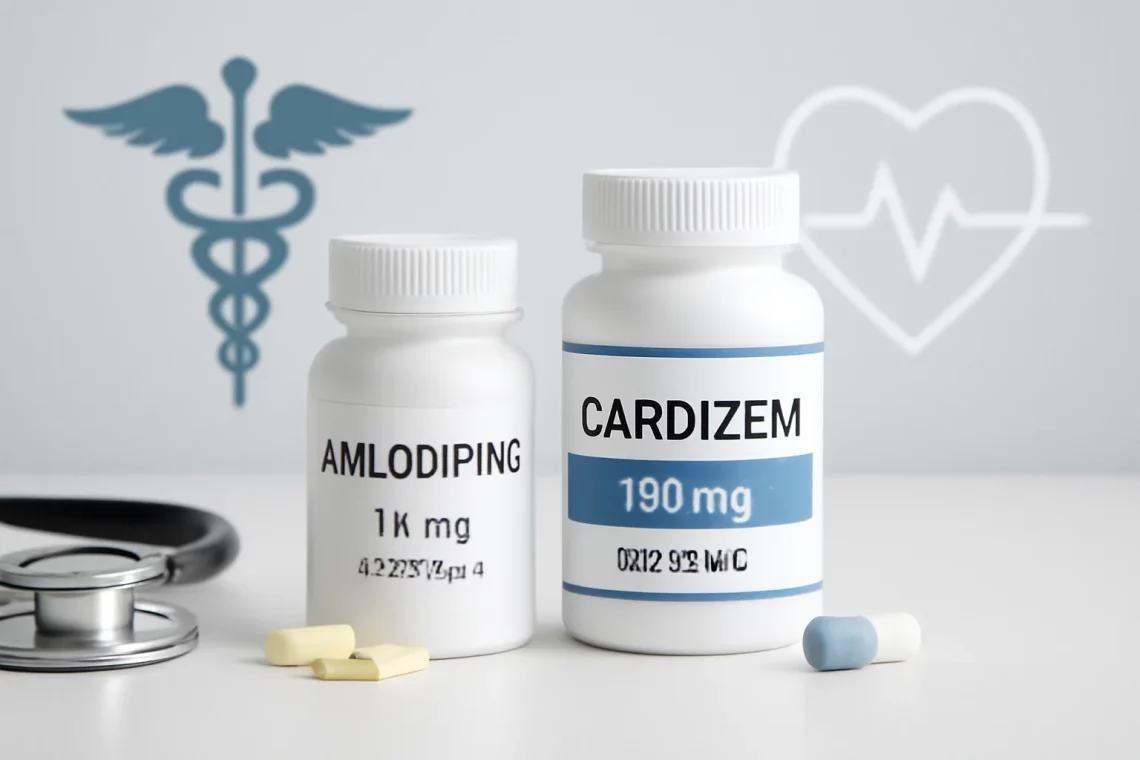
Amlodipine vs Cardizem: Comparing Two Common Blood Pressure Medications
Amlodipine and Cardizem are two commonly prescribed medications used to manage hypertension and certain types of angina. Both belong to a class of drugs known as calcium channel blockers, which work by relaxing the blood vessels to allow for easier blood flow. Over the years, these medications have gained popularity due to their effectiveness in controlling blood pressure and alleviating chest pain associated with heart conditions.
While both Amlodipine and Cardizem serve similar purposes, they have distinct differences that can influence a doctor’s choice when prescribing them. Factors such as the patient’s medical history, specific health conditions, and potential side effects play a crucial role in determining which medication may be more suitable for an individual. As healthcare continues to evolve, understanding these two medications and their implications can empower patients to engage in informed discussions with their healthcare providers, leading to better treatment outcomes.
In this article, we will explore the key differences and similarities between Amlodipine and Cardizem, including their mechanisms of action, side effects, and considerations for use.
Mechanism of Action
Amlodipine and Cardizem, while both classified as calcium channel blockers, operate through slightly different mechanisms that can affect their efficacy and side effect profiles.
Amlodipine primarily works by inhibiting calcium ions from entering vascular smooth muscle and cardiac muscle. This inhibition leads to vasodilation, a process where blood vessels expand, thereby reducing the overall workload on the heart. By decreasing peripheral vascular resistance, Amlodipine effectively lowers blood pressure and can help ease the heart’s workload. This makes it particularly effective for patients with hypertension and chronic stable angina.
On the other hand, Cardizem, which contains the active ingredient diltiazem, functions on a broader level. Like Amlodipine, it inhibits calcium ion influx into the cells, but it also has a more pronounced effect on the heart’s electrical conduction system. Cardizem not only relaxes blood vessels but can also slow down the heart rate and reduce the force of contractions. This dual action makes Cardizem particularly useful for patients with arrhythmias in addition to hypertension and angina.
While both medications aim to lower blood pressure and improve blood flow, their differing mechanisms mean that healthcare providers may choose one over the other based on the patient’s specific condition. Understanding how each medication works can help patients better grasp the intended outcomes and potential effects of their treatment.
Side Effects and Considerations
When considering any medication, understanding the potential side effects is paramount. Both Amlodipine and Cardizem come with their own set of side effects that patients should be aware of.
Common side effects of Amlodipine include swelling of the ankles or feet, flushing, and palpitations. Some patients might experience dizziness or fatigue, especially when starting the medication or increasing the dosage. While these side effects are usually mild and temporary, they can sometimes lead to medication non-compliance if patients are not adequately informed.
Cardizem, while effective, is not without its potential downsides. Patients using Cardizem may experience side effects such as dizziness, headache, and nausea. One notable concern is the potential for bradycardia, or a significant decrease in heart rate, which can be dangerous for some individuals, particularly those with existing heart conditions.
Moreover, patients must consider potential drug interactions. Amlodipine can interact with certain other medications, including those used to treat high blood pressure, leading to an increased risk of hypotension. Cardizem also has a long list of potential interactions, especially with other heart medications, which may necessitate close monitoring.
Given these factors, healthcare providers often take a comprehensive approach when prescribing these medications. They will assess the patient’s overall health, existing conditions, and any other medications being taken to minimize risks and ensure the safest and most effective treatment plan.
Patient Profiles and Usage
Choosing between Amlodipine and Cardizem often involves careful consideration of the patient’s specific health profile and needs.
Amlodipine is frequently prescribed for patients with essential hypertension and those who experience stable angina. Its long half-life allows for once-daily dosing, making it a convenient option for many patients. This can lead to improved adherence to medication regimens, as patients may find it easier to remember to take a single pill each day. Additionally, Amlodipine is often well-tolerated, making it a first-line treatment choice for many healthcare providers.
In contrast, Cardizem may be favored in cases where the patient presents with additional complications, such as arrhythmias or more severe angina. The ability of Cardizem to not only lower blood pressure but also regulate heart rate makes it a versatile option in these situations. However, its dosing schedule may vary, and patients might need to take it multiple times a day, which can be a consideration for those who prefer simplicity in their medication regimens.
Ultimately, the choice between Amlodipine and Cardizem should be made in consultation with a healthcare provider, who can evaluate all relevant factors, including the patient’s lifestyle, frequency of symptoms, and any other underlying health issues. This personalized approach ensures that patients receive the most effective treatment tailored to their unique circumstances.
Conclusion
In summary, both Amlodipine and Cardizem are valuable tools in the management of hypertension and angina, each with its own unique properties and benefits. Amlodipine offers a straightforward once-daily dosing option with a focus on vasodilation, while Cardizem provides a more comprehensive approach that can address heart rate irregularities in addition to blood pressure management.
As always, it’s essential for patients to engage in open discussions with their healthcare providers about their treatment options. Understanding the differences and similarities between these medications can empower patients to make informed decisions about their health.
**Disclaimer:** This article is for informational purposes only and does not constitute medical advice. Always consult with your healthcare provider for any medical concerns or questions regarding medications.




